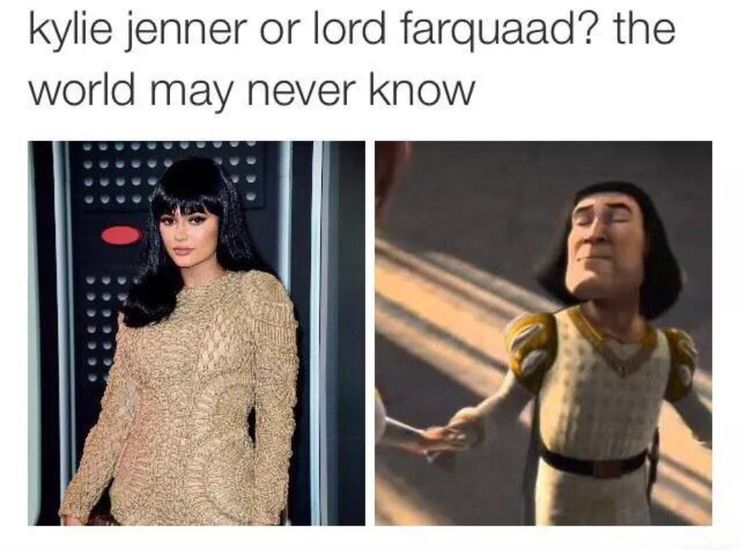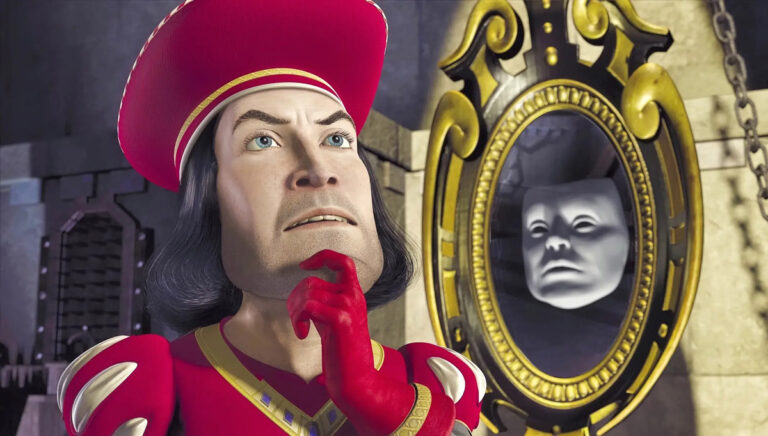Dear internet, please stop calling people with short hair Lord Farquaad
At 2:35 am on 13 July 2019, I was busy shifting clothes from my bed back to the forlorn ‘laundry chair’ in my room when I spotted a pair of craft scissors. For your information, I had spent the past four hours rabbit hole-hopping on YouTube, so you know where I’m going with this. “Brad Mondo, you’re just a rando,” was the last anyone heard from me that night. The morning after, I was a new person with surprisingly decent shoulder-length hair and not-so-see-through bangs.
“Pfft, Lord Farquaad with split ends,” a comment immediately greeted my pompous face reveal. On a quick scroll through the internet—a never-ending source for all guilt-induced relief—I realised I wasn’t alone.
Voiced by John Lithgow, Lord Maximus Farquaad is the cape-wearing villain of DreamWorks’ 2001 blockbuster animated film Shrek. He’s the ruthless ruler of DuLoc who spends his free time interrogating gingerbread men on cookie sheets and chugging martinis in bed. Flirting with the magic mirror is also on his itinerary at times. To become the king of DuLoc and overcompensate for his… erm, vertical challenges, he has to marry Princess Fiona. But alas, she only has heart eyes for Shrek. The xenophobic tyrant, hence, does everything in his power for the validation to place a crown on his head. If you still have trouble remembering him, here’s another visual aid from a questionable source:
Shrexy, huh? Well if you’re interested, I’d also like to pitch you a subreddit and a once-in-a-lifetime tumble down Wattpad dedicated to “servicing His Lordship.” You do you, fellow subject.
Shortly after the movie broke charts and won an Oscar (Photoshopped, unfortunately), Shrek—we’re talking about the golden-hearted ogre here—became a symbol of nostalgia, rivalling SpongeBob SquarePants and Popeye on the pedestal. But the snobbish noble was not far behind. In fact, data from Google Trends reveal that Lord Farquaad is actually the internet’s favourite Shrek character. “While interest in our green hero has flatlined over time, Farquaad searches have actually been on a steady incline, peaking in April 2018 due to ‘internet meme’ related content,” The Cut wrote at the time. Three years later, the character continues to be on a rollercoaster ride which only goes up—hitting an all-time high just last month, in November 2021.
Be it for his chiseled jaw or stormy eyes, the internet is evidently obsessed with Lord Farquaad. Maybe this stems from the fact that we’re still ruled by vain villains with the wildest haircuts? Nevertheless, the antagonist has been infiltrating meme pages and aesthetics since the early aughts—down to a point where he’s even hailed as an incidental style icon.

So, what happens when Lord Farquaad walks into a salon? According to the internet, one should visualise the pageboy haircuts of Amélie Poulain and Natalie Portman from the 90s. When Beyoncé debuted “short bangs” in 2014, several publications described her bold choice as “alarming.” As soon as Emma Watson jumped on the look, the term “short bangs” was replaced with “baby bangs” and “micro-fringe.” Heck, even “TERF bangs” were doing the rounds as one of the beauty industry’s most puzzling terms. By 2018, news outlets were citing Lord Farquaad as a reference and suggesting therapy to those who preferred the style.
Then came Selena Gomez’ triumphant return to the American Music Awards (AMAs) in 2019. Decked in a Versace dress, the artist sported the classic “Farquaad flip.” You know, the one where short, pine-needle-straight hair hits the jawline and curls inward at the bottom? It frames your face but also gives off big Farquaad energy. In Gomez’ case, her dress incidentally seemed to be Shrek-green. How convenient for the internet, indeed.
A 2019 article by Elle also noted how Constance Wu and Jennifer Lopez channelled their inner Farquaads for the premier of Hustlers—with Wu even opting for baby bangs. Halle Berry was yet another artist who resurrected the Farquaad-ian debates in 2021, when Berry’s stylist chopped off her hair the night before attending the Oscars. And before you ask, yes, ‘it’ girls Kylie Jenner and Khloe Kardashian also couldn’t resist the allure of Lord Farquaad’s tresses.
“To create this hairstyle, brushing with a small round brush is key,” Jesus Guerrero, the stylist behind the Jenner-Kardashian flips, told Elle. “It helps create that full flipped-in look.” According to Guerrero, the hairstyle is “an easy chic look” that is simple yet exudes power. Since it’s literally being compared to a xenophobic ruler, I don’t see why not. In the interview, the stylist also added how round brushes might take some practice. “If you’re not good with a round brush you can also use a curling iron to help give you that bumped-in effect,” Guerrero noted.
On TikTok, however, users are posting tutorials to evade the label—and its association with the lad from Berries and Cream—altogether. “Short hair hairstyles so ppl stop calling u lord farquaad,” a popular video by @iconicakes reads. A bunch of others cooped under #LordFarquaad are also raising awareness on how the term is used to refer to the awkward, in-between phase of growing short hair out. Trust me, that phase is anything but fun. Choosing to cut your hair short is a hard decision to make in the first place. Plus, I bet nobody asks for a Lord Farquaad at a hair salon… right?
That being said, if you are at the receiving end of the term, remember that the royalcore aesthetic is doing its rounds on the internet as we speak. So you might as well grab a pair of evening gloves and set out on a manhunt for internet-trolled criticism. And if someone goes too far, stand up on a chair and announce: “Some of you may die, but that is a sacrifice I am willing to make.” Applause is guaranteed to follow.





